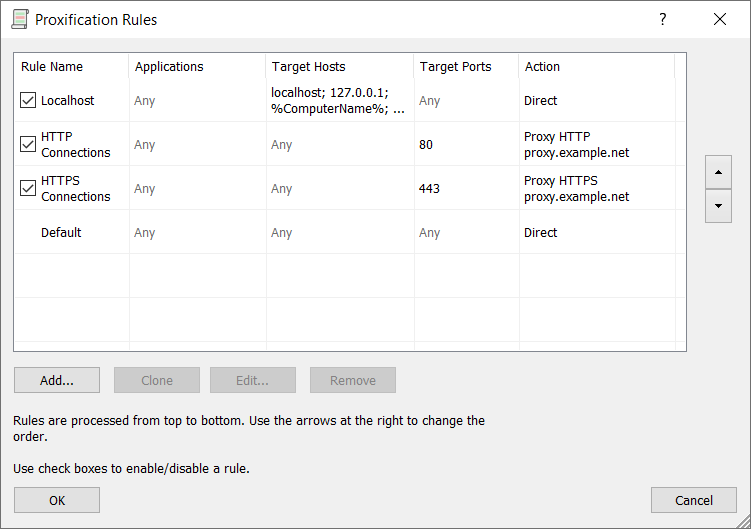People commonly confuse an HTTP proxy and an HTTPS proxy. HTTP proxy servers can process HTTP connections (port 80). They also support HTTPS connections (SSL), but such connections are usually allowed only on port 443 (the standard port for HTTPS). For example, this is the default configuration for Squid and Microsoft ISA proxy servers. If an HTTP proxy allows HTTPS connections on arbitrary ports, it can be called an HTTPS proxy server (also called CONNECT or SSL proxy). In this case, it can be used for generic TCP connections, exactly as a SOCKS v4/5 proxy.
Proxifier works with HTTP proxy servers that do not support HTTPS on arbitrary ports. Due to the technical limitation of this protocol, it is possible to process HTTP connections only with such proxy servers, meaning that users must configure the Proxification Rules accordingly.
First, you must enable HTTP proxy support in the menu in Proxifier.
Next, you will be able to add an HTTP proxy server similarly to any other type of proxy. Once an HTTP proxy server is added, make sure to set the Proxification Rules properly. If you also intend to process HTTPS connections through this proxy, you should add this proxy again as HTTPS.
Suppose proxy.example.net:8080 is a usual HTTP proxy that supports HTTP on port 80 and HTTPS on port 443, and we want to configure Proxifier to process HTTP/HTTPS connections (web browsing) through it.
The following images illustrate the correct setup.


You can check the HTTP proxy servers with the Proxy Checker tool.